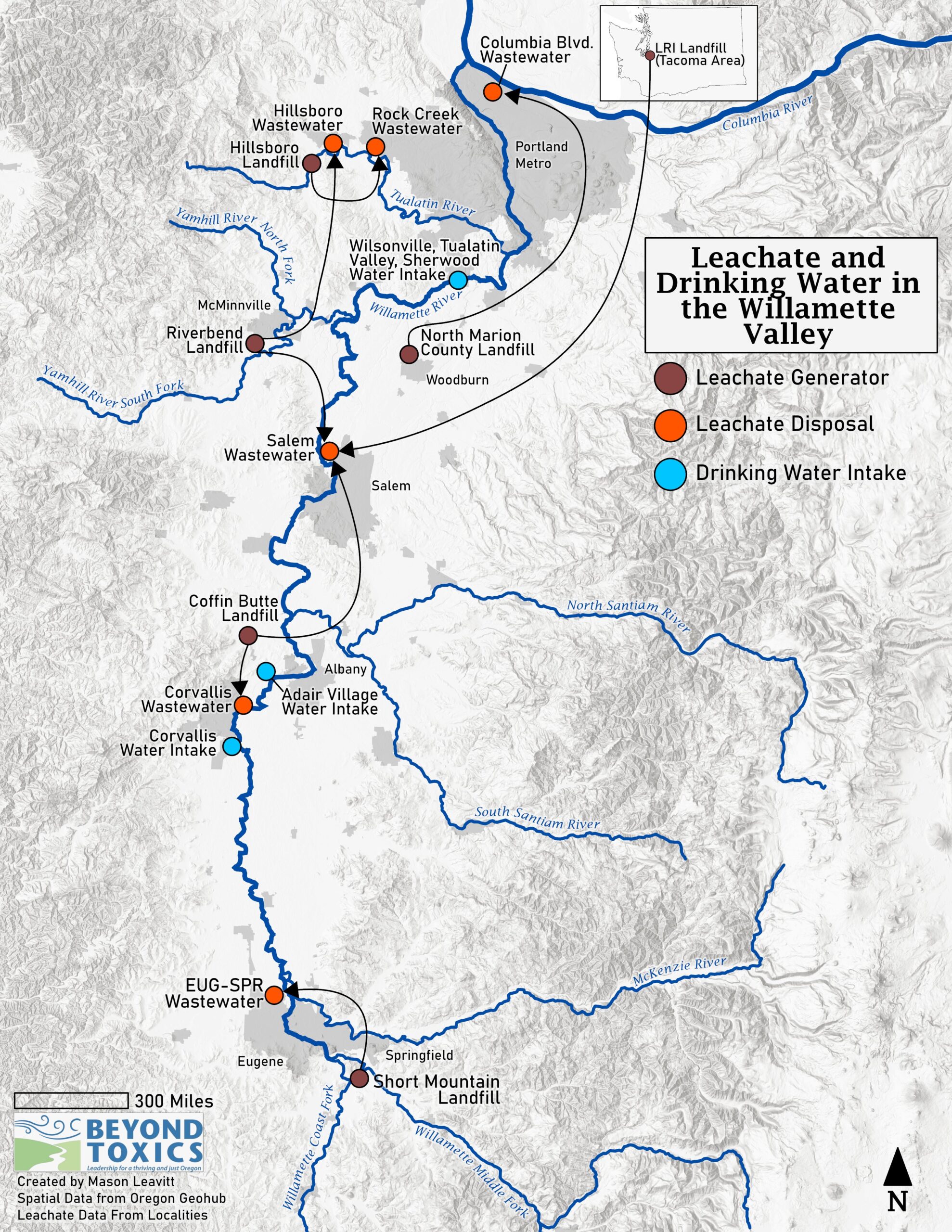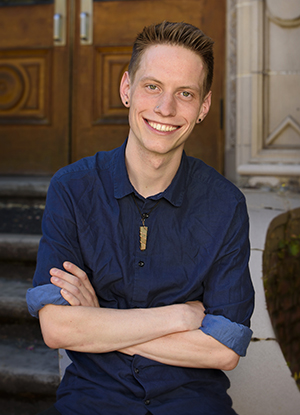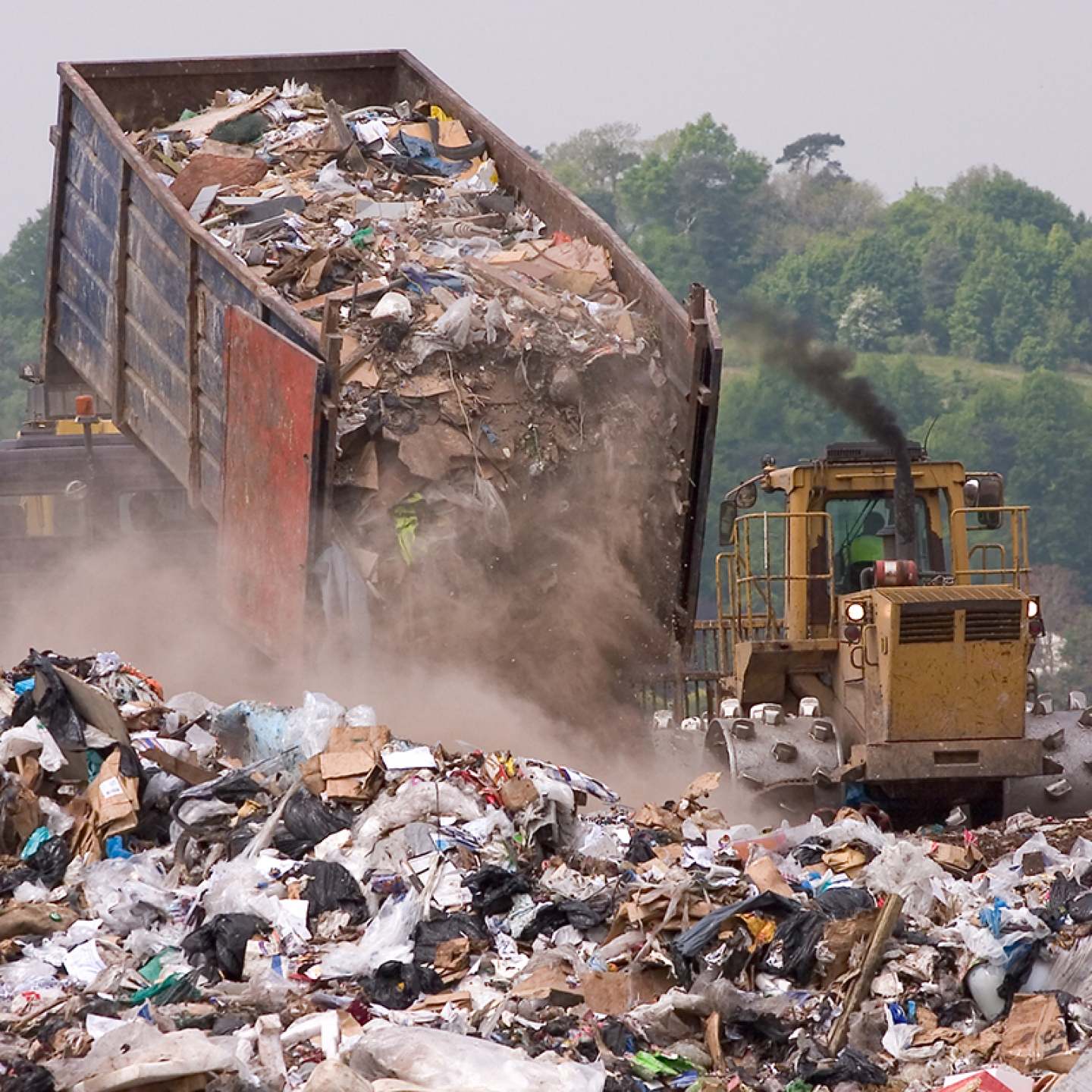Over the first weekend of March, I had the opportunity to attend the 2024 Public Interest Environmental Law Conference, most commonly referred to as PIELC. Every year, lawyers, policy experts, and activists come from all over the United States and the world to exchange views, strategies, and projects regarding some of the most salient environmental issues currently facing society. My objective was to increase visibility around Beyond Toxics’ burgeoning work on the topic of climate and toxic impacts from landfills. To accomplish this, I reached out to our partners, the Valley Neighbors for Environmental Quality and Safety, to organize a panel.
Joel Geier, an hydrogeologist who works internationally, and Mark Yeager, a water quality policy expert, agreed to help. Together we presented "Landfills: the good, bad, ugly, and the alternatives" to a packed audience. Our panel covered the climate impacts of methane produced by landfills, long term liabilities to host communities, and the effects of leachate on ground and surface water. Leachate is the toxic stew produced by water percolating through garbage and picking up chemicals, heavy metals, microplastics and other "forever" chemicals from waste. Leachate is collected by pipes underneath the landfill and trucked to local wastewater treatment facilities. These facilities are not capable of treating or removing many of the toxins in leachate.
During the questions portion of the panel, we heard from audience members from all over the United States who face issues similar to Beyond Toxics. We discussed struggles, strategies, and solutions with experts from Missouri, Tennessee, Massachusetts, Arizona, and Oregon. For me, it was both instantly gratifying and disheartening to hear so many other advocates dealing with the same issues across states. On one hand, feeling solidarity is empowering, while on the other, it’s tough to face the pervasiveness of problems resulting from landfills.
The second goal I had in attending PIELC was to learn more about toxic issues that intersect with landfills. For example, I learned that landfills are one of the largest single sources of PFAS chemicals in the environment. PFAS is a group of chemicals used to enhance waterproofing and non-stick properties in consumer products. They are nearly indestructible, earning the name “forever chemicals,” and many of them cause cancer. Testing done by local governments in Oregon show clear evidence of high concentrations of PFAS chemicals in landfill leachate. We also know PFAS chemicals end up in the Willamette river, risking the safety of recreationists, fishermen, and communities relying on the river for drinking water. Phasing out PFAS would eventually cause landfill leachate to reduce its PFAS concentration, and cause less to go in the Willamette and other rivers.

Map of Leachate Movement in the Willamette Valley
I felt delighted to see other environmental advocates present legislative goals to phase out PFAS from cosmetics, carpets, contact lenses, and more. This proposed phase-out is commonly referred to as an “upstream solution,” when a problem is solved or mitigated at the source. Putting an end to the production of PFAS means preventing all the problems it causes later in our streams, food, and bodies.
The same process could be said for plastics. Reducing the production and consumption of single-use plastics, such as cups, to-go containers, and excessive packaging, would result in several benefits to society. One, plastics contain many toxic additives used to enhance flexibility, waterproofing, toughness, and heat resistance. These additives escape products made from plastic during use and enter food, skin, and leave residues of chemicals in the environment. Reducing the excessive use of oftentimes unnecessary single-use plastic prevents exposure to additives. In a similar manner, this would reduce the amount of plastic we burnin incinerators or dump into landfills at the end of its life cycle, both of which have dangerous implications for health and the environment. Lastly, it would dramatically reduce plastic waste in oceans, beaches, wildlife, rivers, and more.
PIELC attendees repeatedly affirmed how important each step of toxics management is–both upstream and downstream–in order to create a cleaner and safer future for everyone. While our presentation on landfills highlighted all the problems created by the disposal of consumer and industrial waste, many other panels focused on all the problems that could be solved by phasing out or reducing certain substances from production. Beyond Toxics will continue to advocate for safer management of solid waste in landfills, and we will keep supporting our allies across the state as they fight for upstream solutions.

By Mason Leavitt,
GIS and Spatial Data Coordinator






